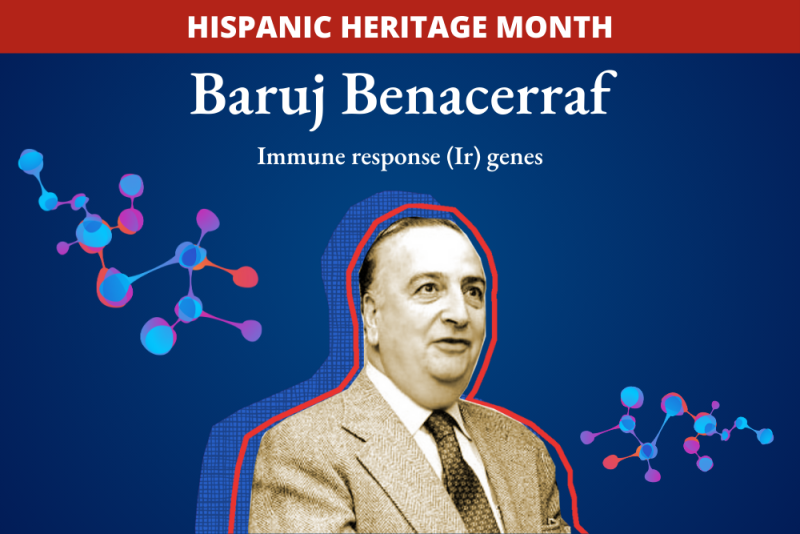
As we observe Hispanic Heritage Month, we recognize the many contributions of Hispanic scientists and researchers who have advanced our understanding of the immune system. Their groundbreaking discoveries in the principles of immunology shaped our knowledge and improved lives globally. This month, we will highlight some of their many accomplishments and the foundational work they performed. Their achievements are a testament to the strength and innovation within the Hispanic community.
Baruj Benacerraf (1920-2011), Nobel laureate
We often think of ourselves as unique, like our fingerprints, and immunologically, this also holds true. Our genetic makeup enables us to respond uniquely to a wide range of antigens and determines how well we fight infections or how prone we are to autoimmune diseases. Baruj Benacerraf's groundbreaking work on the genetic basis of the major histocompatibility complex (MHC) earned him the 1980 Nobel Prize in Physiology or Medicine. His discoveries dramatically advanced our understanding of the immune system and autoimmune diseases like multiple sclerosis.
Born in Caracas, Venezuela, Benacerraf spent his early years in Paris before emigrating to the United States in 1940. After earning his MD from the Medical College of Virginia, he served in the US Army in France before returning to New York City. Though his father hailed from Spanish Morocco, Benacerraf was deeply influenced by his French-Algerian mother’s heritage. He often reflected on the challenges posed by his multicultural background, both in the US and during his time living in Paris.
Benacerraf's scientific career began in 1948 at Columbia University, where he worked with Elvin Kabat, a leading immunochemist. In 1949, he moved to Paris where he conducted pioneering research on the "reticuloendothelial system" — the network of white blood cells responsible for engulfing foreign particles and cell debris. In 1956, Benacerraf joined New York University (NYU), where he made significant contributions to our understanding of how the body mounts immune responses, such as identifying antibody subclasses, discovering cellular receptors, and exploring the unique antigen-recognition properties of B and T lymphocytes.
Benacerraf's most notable achievement came from his studies on guinea pigs, where he found that some animals could mount immune responses to simple antigens while others could not. He demonstrated that this ability was controlled by a genetic locus determining whether the immune system could recognize the antigen and trigger a response. This discovery of immune response (Ir) genes, later linked to the MHC, became the foundation for his recognition by the Nobel Prize committee. These Ir genes were ultimately found to code for MHC molecules themselves.
Over five decades, Benacerraf's work shaped the field of immunology. He developed the intellectual framework for how T lymphocytes recognize antigens, established world-renowned immunology centers, and played a pivotal role in advancing cancer research. A mentor to generations of immunologists, Benacerraf passed away at the age of 90 on August 2, 2011.